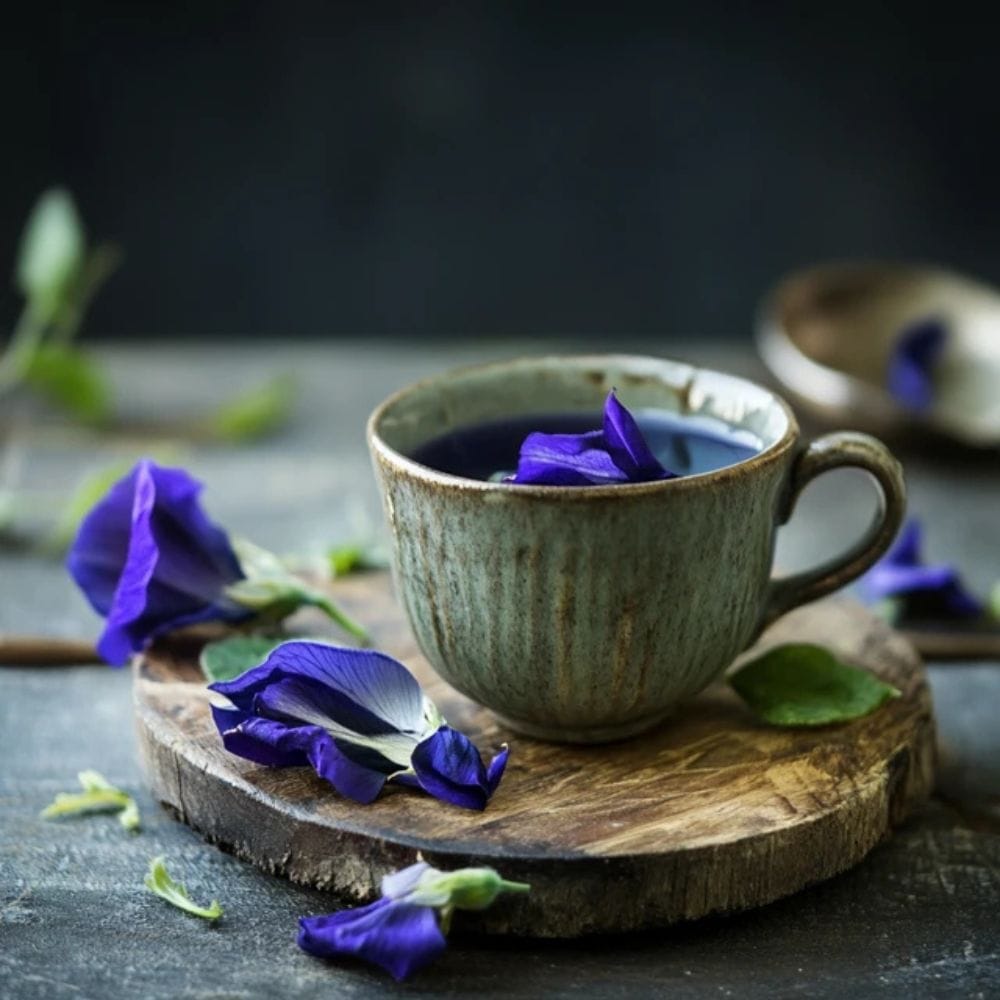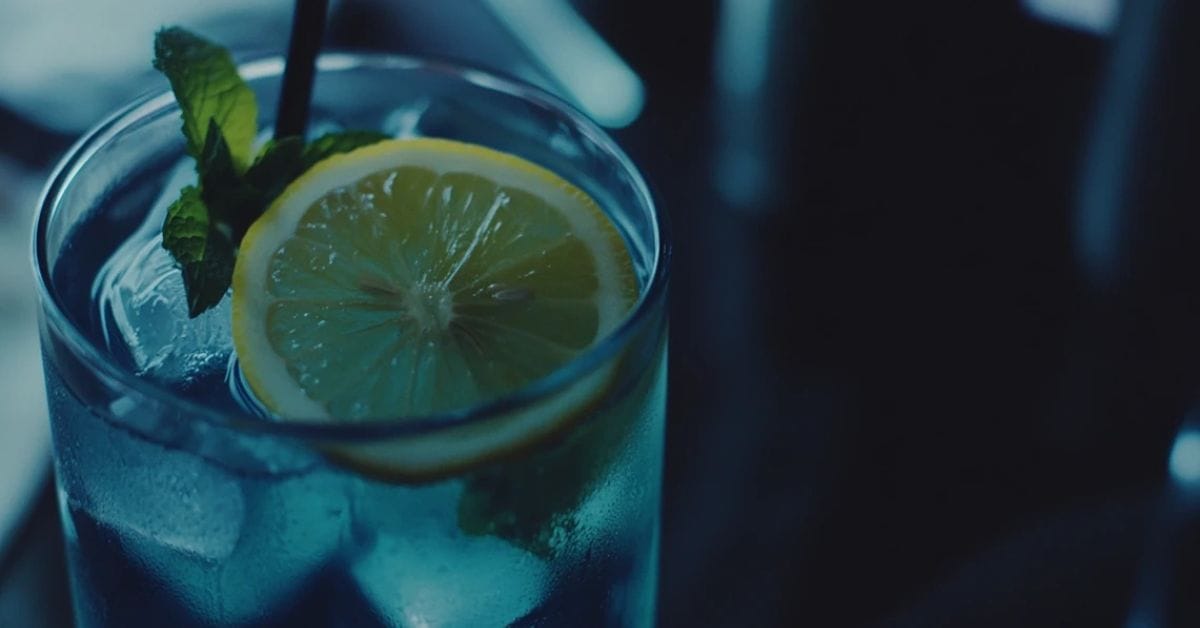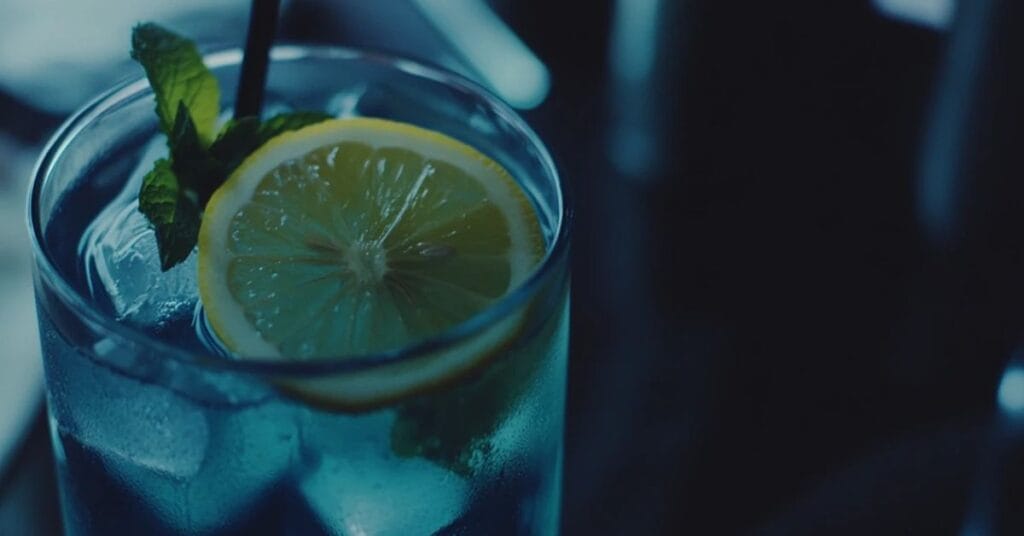Blue lemonade is much more than just a drink; it’s a refreshing summer delight that captivates both the eyes and the taste buds. Moreover, its vibrant hue and tangy-sweet flavor make it a favorite choice for parties, picnics, and special occasions. Furthermore, this dazzling beverage has surged in popularity due to its stunning presentation and versatility. Whether you’re planning a gathering or simply exploring creative recipes, blue lemonade offers endless possibilities to impress and enjoy.
The Origin and Popularity of Blue Lemonade
Historical Emergence of Blue Lemonade
Blue lemonade emerged as a delightful twist on the classic lemonade recipe. While traditional lemonade has long been a staple in various cultures, the blue variation started gaining attention in the late 20th century. Initially, it gained traction at fairs and carnivals, where its bright hue immediately caught the eye. Furthermore, its appeal extended beyond its taste, as the visual charm of this beverage became its defining characteristic.
To add to its popularity, vendors began experimenting with ingredients to achieve the vibrant blue color. Early recipes primarily relied on artificial coloring, which made the drink both affordable and accessible. Today, however, it has evolved into a trendy and versatile beverage served in homes, restaurants, and special events worldwide.
Social Media Influence on Blue Lemonade Trends
In recent years, social media has played a significant role in transforming blue lemonade into a global phenomenon. For instance, platforms like Instagram and Pinterest showcase an array of beautifully garnished blue lemonade creations, complete with lemon slices, mint leaves, and elaborate presentations. Additionally, hashtags like #BlueLemonade and #ColorfulDrinks have helped the beverage gain traction, making it a trendy choice for food bloggers and influencers.
Moreover, challenges such as “DIY colorful drinks” encourage people to experiment with natural and artificial coloring agents, pushing the boundaries of creativity. As a result, blue lemonade is now seen not only as a drink but also as an art form. Furthermore, its visual appeal has elevated it from a simple refreshment to a centerpiece in many celebrations.
Key Ingredients in Blue Lemonade
Traditional Components of Blue Lemonade
At its core, blue lemonade is surprisingly simple yet incredibly refreshing. Its traditional recipe includes:
- Fresh Lemon Juice: The main source of its tangy flavor.
- Water: Essential for diluting the lemon’s acidity and balancing the taste.
- Sweeteners: Sugar, honey, or syrups to counter the tartness.
- Blue Coloring Agents: Artificial or natural ingredients to create the signature hue.
Interestingly, the preparation method can significantly affect the final taste. For instance, using freshly squeezed lemon juice instead of bottled concentrates ensures a more authentic and vibrant flavor. Not only does this enhance the taste, but it also adds to the overall freshness of the beverage.
Natural vs. Artificial Coloring in Blue Lemonade
The vivid color of blue lemonade is one of its most appealing traits, and the choice between natural and artificial coloring options can make a significant difference.
Natural Coloring
- Ingredients like butterfly pea flower tea or blue spirulina are often preferred for their health benefits.
- Butterfly pea flower tea, for example, creates a stunning blue hue that can shift to purple when mixed with lemon juice.
- These options add a unique nutritional element to the drink.
Artificial Coloring
- Synthetic food colorings are widely used due to their affordability and ability to produce consistent results.
- However, some consumers may avoid them due to potential sensitivities or health concerns.
| Comparison Table | Natural Coloring | Artificial Coloring |
|---|---|---|
| Source | Plant-based | Synthetic chemicals |
| Health Impact | Nutrient-rich | May cause sensitivities |
| Visual Outcome | Muted tones | Bright, consistent hues |
Additionally, understanding these differences allows you to customize your blue lemonade recipe to align with personal preferences and dietary needs.
How to Make Blue Lemonade at Home
Classic Blue Lemonade Recipe
Making blue lemonade at home is both fun and rewarding. To begin, you’ll need the following ingredients:
Ingredients:
- 1 cup freshly squeezed lemon juice
- 4 cups cold water
- ¾ cup sugar or your preferred sweetener
- 5-7 drops of blue food coloring or natural dye
Preparation:
- Combine lemon juice and sugar in a pitcher, stirring until the sugar dissolves completely.
- Add cold water and mix thoroughly.
- Incorporate the blue coloring, adjusting the quantity to achieve your desired shade.
Serving:
- Pour over ice, garnish with lemon slices or mint, and serve immediately.
Pro Tip: Always use chilled ingredients to enhance the drink’s refreshing quality.
Variations and Enhancements
For those who want to experiment further, blue lemonade offers countless variations:
- Berry Infusions: Add mashed blueberries or raspberries for an additional fruity twist.
- Herbal Additions: Mint leaves or a sprig of basil can elevate the aroma and taste.
- Layering Effects: Carefully pour the lemonade over grenadine or sparkling soda for a beautiful gradient effect.
Moreover, these enhancements not only elevate the flavor but also transform the beverage into a visually stunning centerpiece for any event.y incorporating these ideas, you can create a personalized version of blue lemonade that stands out.
Natural Coloring Alternatives for Blue Lemonade
Using Butterfly Pea Flower Tea

For those seeking a natural way to achieve a vibrant blue hue, butterfly pea flower tea is an excellent option. This plant-based ingredient, derived from the petals of the butterfly pea flower, provides a striking blue color that’s both visually appealing and free from artificial dyes. Not only is it an eye-catching addition, but it also offers antioxidant properties and potential calming effects.
To use butterfly pea flower tea in your recipe:
- Steep dried flowers or tea bags in hot water until the liquid turns a deep blue.
- Let it cool, then mix it into your lemonade base.
- Experiment with pH changes – Adding lemon juice transforms the blue hue into shades of purple, creating a mesmerizing effect.
Advantages of Butterfly Pea Flower Tea
- Provides a natural and vibrant blue color.
- Contains antioxidants and potential health benefits.
- Creates a fascinating color-changing effect.
This unique property makes butterfly pea flower lemonade perfect for themed events and creative beverage presentations.
For more details on this ingredient, refer to the benefits of butterfly pea flower tea and explore its versatility in beverages.
Blue Spirulina as a Coloring Agent
Another natural alternative is blue spirulina, a nutrient-rich algae extract known for its vibrant blue pigment. In addition to its striking color, blue spirulina is a superfood, offering a range of vitamins, antioxidants, and protein. It’s a great choice for health-conscious individuals who want to avoid synthetic dyes while enhancing the nutritional value of their drink.
To use blue spirulina:
- Dissolve a small amount of blue spirulina powder in water.
- Mix it into your lemonade base, stirring well to distribute the color evenly.
- Adjust the amount carefully – A little goes a long way to avoid overpowering the flavor.
Both butterfly pea flower tea and blue spirulina provide beautiful, natural alternatives to synthetic food coloring while keeping your blue lemonade both delicious and visually stunning.
Crafting Blue Lemonade Cocktails
Blue Lemonade with Blue Curaçao
For adults looking to elevate their lemonade into a vibrant cocktail, blue curaçao is a popular addition. This citrus-flavored liqueur not only deepens the blue hue but also adds a refreshing, zesty twist to the drink.
How to make Blue Lemonade with Blue Curaçao:
- Combine equal parts lemonade and blue curaçao in a glass.
- Add ice and stir gently.
- Garnish with a lemon slice or a sprig of mint for extra flair.
This cocktail is a perfect summer party drink, offering a balance of tartness and sweetness with a bold, Instagram-worthy color.
Vodka-Infused Blue Lemonade
For a simpler but equally delicious cocktail, vodka-infused blue lemonade is a great option. This version maintains the refreshing lemonade taste while adding a touch of smooth spirit.
How to make Vodka-Infused Blue Lemonade:
- Mix one part vodka with two parts lemonade, stirring well.
- Serve in a frosted glass with a sugar or salt-rimmed edge.
- Garnish with lemon slices or berries for a visually stunning drink.
For added creativity, try layering with triple sec or topping with sparkling soda for a bubbly twist. This allows you to customize the drink to your guests’ preferences, making it an exciting and versatile party beverage.
Cocktail Ideas
| Cocktail Name | Key Ingredients |
|---|---|
| Blue Lemonade with Blue Curaçao | Lemonade, blue curaçao, ice |
| Vodka-Infused Blue Lemonade | Lemonade, vodka, garnishes |
| Sparkling Blue Lemonade | Lemonade, soda water, berries |
With these natural and cocktail variations, you can create a beautiful and refreshing blue lemonade that suits any occasion—whether you’re looking for a fun non-alcoholic drink or a party-ready cocktail.
Health Considerations of Food Coloring in Beverages
Understanding Artificial Food Colorings
Artificial colorings are a common choice for achieving bright and consistent colors in beverages, including blue lemonade. However, it’s important to consider their potential health implications. According to FDA guidelines on color additives in food, these additives must undergo rigorous safety testing before approval. Nevertheless, some studies suggest that excessive consumption may lead to sensitivities or allergic reactions in certain individuals.
Despite their widespread use, it’s worth noting that natural alternatives can provide a healthier approach without compromising visual appeal. Furthermore, using natural ingredients eliminates the risk of synthetic chemicals, offering a safer option for both children and adults.
Potential Health Impacts
While artificial coloring agents are generally considered safe in moderation, some concerns persist regarding their long-term effects. For instance, certain studies have linked artificial dyes to behavioral changes in children, particularly those prone to hyperactivity. Moreover, individuals with sensitivities may experience mild reactions such as headaches or digestive discomfort.
To minimize potential risks, consider experimenting with natural coloring agents like butterfly pea flower tea or blue spirulina. Not only are these alternatives safer, but they also align with the growing trend of health-conscious living. By making thoughtful choices, you can enjoy the aesthetic beauty of colorful beverages while prioritizing well-being.
Serving Suggestions for Blue Lemonade
Ideal Occasions for Blue Lemonade
Blue lemonade’s vibrant color and refreshing taste make it a standout drink for a variety of occasions. Whether hosting a casual summer gathering or a formal celebration, this drink effortlessly enhances the event with its eye-catching appearance.
- Summer BBQs & Pool Parties – Serve in large pitchers with ice and mint sprigs for a cooling refreshment.
- Gender Reveals & Baby Showers – Garnish with blue accents in elegant glassware for a picture-perfect theme.
- Holiday Celebrations – Present in festive glasses with sugared rims for an extra-special touch.
- Weddings & Formal Events – Elevate the look with edible flowers and tall-stemmed glasses.
- Casual Picnics & Family Gatherings – Offer in mason jars or clear plastic cups for a rustic appeal.
| Event | Serving Style |
|---|---|
| Summer BBQs | Pitchers with ice, mint sprigs |
| Gender Reveals | Garnished glasses, blue accents |
| Holiday Parties | Festive glasses, sugar-rimmed cups |
Blue lemonade pairs well with light appetizers and sweet desserts, making it an excellent addition to any refreshment table.
Garnishing and Presentation Tips
The right presentation enhances the appeal of blue lemonade, making it even more enticing for guests.
- Garnish with Fresh Blueberries & Lemon Wheels – Complements the color and flavor beautifully.
- Use Edible Flowers or Mint Leaves – Adds an elegant touch for upscale events.
- Freeze Berries or Edible Flowers in Ice Cubes – Creates a visually stunning effect as they melt.
- Serve in Unique Glassware – Tall, slender glasses for a modern look, or mason jars for a rustic vibe.
- Create a Sugared Rim – Dip glass edges in lemon juice and then in sugar for a frosted effect.
Small presentation details make a big impact, ensuring your blue lemonade is both delicious and visually captivating.
Nutritional Insights into Blue Lemonade
Caloric and Sugar Content
Understanding the nutritional profile of blue lemonade helps those looking to balance indulgence with health. A typical serving contains 120–150 calories, primarily from sugar and sweeteners.
| Ingredient | Calories Per Serving |
|---|---|
| Fresh Lemon Juice | ~20 |
| Sweeteners (Sugar, Honey, Agave) | ~60–80 |
| Coloring Agents | Negligible |
Store-bought versions may contain added preservatives and artificial sweeteners, increasing sugar levels.
Healthier Alternatives:
- Use honey, agave, or stevia instead of granulated sugar.
- Dilute with sparkling water to reduce sugar content while adding a fizzy twist.
- Opt for fresh lemon juice instead of pre-packaged lemonade mix for better vitamin C content.
Benefits of Using Fresh Ingredients
Using fresh ingredients enhances both flavor and nutritional value.
- Lemons – Rich in vitamin C, which supports the immune system and promotes healthy skin.
- Butterfly Pea Flower Tea & Blue Spirulina – Natural coloring agents that provide antioxidants and potential health benefits.
- Fresh Mint & Herbs – Can aid digestion while adding aromatic depth.
Choosing natural over artificial ensures a healthier, more flavorful lemonade that everyone can enjoy.
Blue Lemonade Variations Across Cultures
Regional Twists on Blue Lemonade
While blue lemonade is popular in Western countries, other cultures have added unique elements, giving this drink global appeal.
- Southeast Asia – Uses butterfly pea flower tea for its natural blue hue and antioxidant properties.
- Mediterranean Regions – Infuses lemonade with rosemary or thyme for an aromatic herbal twist.
- Tropical Regions – Blends with fresh mango, pineapple, or coconut water for a fruity, exotic variation.
These regional adaptations highlight how ingredients and techniques can transform a simple drink into something special and culturally unique.
Blue Lemonade in Popular Media
Blue lemonade has made appearances in movies, TV shows, and literature, often symbolizing fun and creativity. Its striking color and refreshing taste make it a staple at celebrations and summer-themed visuals.
Additionally, social media platforms like Instagram and TikTok have fueled its popularity, with creative spins and presentation ideas being widely shared. This exposure keeps the drink trendy and inspires new enthusiasts to experiment with homemade versions.
Common Mistakes to Avoid When Making Blue Lemonade
Balancing Sweetness and Tartness
A common mistake when making blue lemonade is getting the sugar-to-lemon ratio wrong. Too much sugar overpowers the drink, while excessive lemon juice makes it overly tart.
| Common Flavor Issues | Solution |
|---|---|
| Too Sweet | Add more lemon juice or dilute with water. |
| Too Tart | Introduce extra sugar, honey, or agave. |
| Bland Flavor | Add a pinch of salt or lemon zest to enhance depth. |
Starting with small amounts of sugar and adjusting as needed helps achieve the perfect balance.
Preventing Separation and Sediment
Another frequent issue is ingredient separation, leading to an uneven mix. This happens when sugar isn’t properly dissolved or the natural coloring isn’t well incorporated.
How to Prevent Separation:
- Dissolve sugar in warm water first before adding it to the lemonade.
- Stir thoroughly and frequently to ensure even distribution.
- Use a blender for quick mixing if adding fruit or thickening agents.
By following these tips, you’ll ensure a perfectly blended, visually stunning, and deliciously refreshing blue lemonade every time.
FAQs About Blue Lemonade
What Gives Blue Lemonade Its Color?
The vibrant blue hue of this drink is achieved using either natural or artificial coloring agents. Natural options include butterfly pea flower tea, which not only provides the color but also adds a subtle herbal note. Additionally, blue spirulina is another natural choice that contributes both color and nutrients. Artificial food colorings, like liquid or gel dyes, are often used for their convenience and bright results.
Can I Make Blue Lemonade Without Artificial Coloring?
Yes, it is entirely possible to create a naturally colored version. Butterfly pea flower tea and blue spirulina are excellent alternatives to synthetic dyes. Furthermore, these natural ingredients offer additional health benefits, making them a better choice for health-conscious individuals.
How Can I Make a Sugar-Free Version of Blue Lemonade?
For a sugar-free version, replace sugar with natural sweeteners like stevia, monk fruit, or erythritol. These alternatives provide sweetness without the calories, making them ideal for those watching their sugar intake. Additionally, diluting the lemonade with sparkling water can reduce the overall sweetness while adding a refreshing fizz.
What Fruits Pair Well with Blue Lemonade?
Fruits like blueberries, raspberries, and strawberries complement the citrusy base perfectly. Not only do they enhance the flavor, but they also add visual appeal when used as garnishes. Additionally, tropical fruits such as pineapple and mango can be blended into the drink for a sweeter, more exotic twist.
How Should I Store Leftover Blue Lemonade?
Leftovers can be stored in an airtight container and kept in the refrigerator for up to three days. To maintain freshness, avoid adding ice directly to the stored lemonade, as it can dilute the flavor over time. Instead, add ice just before serving. Additionally, stir well before serving to ensure that the flavors and color are evenly distributed.
Final Thoughts on Blue Lemonade
Blue lemonade is a drink that continues to captivate with its vibrant color, refreshing taste, and endless versatility. Whether served at a casual barbecue, an elegant event, or even as a themed party centerpiece, it never fails to impress. Moreover, the variety of natural and artificial coloring options allows you to customize the drink according to your preferences and dietary needs.
For a healthier and more sustainable option, consider using fresh ingredients and natural coloring agents like butterfly pea flower tea or blue spirulina. Additionally, experimenting with variations such as cocktails or fruit-infused versions ensures that there’s always something new to try.
Ultimately, blue lemonade is more than just a drink—it’s a creative experience. Try making your own version today and enjoy its delightful charm!

Blue Lemonade
Equipment
- Pitcher
- Stirring Spoon
- Measuring Cups
Ingredients
Main Ingredients
- 1 cup freshly squeezed lemon juice
- 4 cups cold water
- 3/4 cup sugar or preferred sweetener
- 5-7 drops blue food coloring or natural dye like butterfly pea flower tea
Instructions
- In a pitcher, combine freshly squeezed lemon juice and sugar, stirring until the sugar dissolves completely.
- Add cold water and mix thoroughly to balance the flavors.
- Incorporate blue food coloring or natural dye, adjusting the amount to achieve the desired shade.
- Pour over ice, garnish with lemon slices or mint, and serve immediately.






